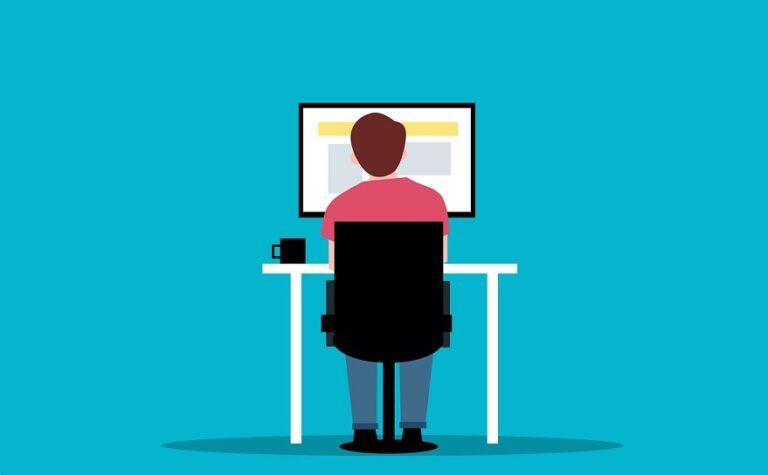How to Become a Successful WordPress Freelancer

Learn how to become a successful WordPress freelancer, develop websites with WordPress, and start a thriving freelancing career.
Starting a freelance career in web design with WordPress can be an enjoyable and beneficial journey. For user-friendly platform and endless customization options, WordPress is perfect for beginners and professional designers alike. Whether you desire to start a small blog or work with a company, WordPress is a perfect choice to make your web design shine.
The first step to WordPress freelancing is to understand the basics of WordPress. If you don’t like coding, you don’t need to be a coding expert. However, knowing how to navigate the platform, you have to have a clear understanding on its themes, plugins, or widgets. This will give you a strong foundation of WordPress.
Once you’re skilled in WordPress, it’s time to build your portfolio. This is crucial for showcasing your work to potential clients. Create a few sample websites or offer your services to friends and family to get started. Your portfolio will help you land your first clients and build your reputation in the freelance world.
Why WordPress?
Before diving into the “how,” it’s essential to understand why WordPress is a perfect choice for web design, especially as a freelancer:
- Popularity and Demand: WordPress powers over 40% of all websites on the internet. Many small businesses, startups, and even large corporations use it because it’s open-source, highly customizable, and user-friendly. This widespread usage creates a steady demand for WordPress web designers.
- Flexibility and Scalability: Whether you’re building a simple blog, an e-commerce site, or a corporate website, WordPress can handle all types of projects. It’s flexible enough to grow with the client’s needs.
- Ease of Use: WordPress allows for quick prototyping and fast iteration, which can speed up your workflow. Even if you’re not a developer, WordPress offers themes, plugins, and drag-and-drop builders (like Elementor or WPBakery) that make it easier to create professional-looking websites.
- Client-Friendly: Once a website is set up, clients can easily manage their content, update text, and images themselves. Many other platforms don’t offer like this.
With these advantages in mind, let’s dive into how you can turn WordPress web design into a sustainable freelance career.
Essential Skills for Freelance WordPress Designers
As a freelance WordPress designer, you need a diverse set of skills to be competitive and efficient. Here’s a breakdown of the essential skills:
1. Design Skills
Web design is still the foundation of what you do. You should have a solid understanding of visual design principles such as:
- Typography: Choosing fonts that are legible and aesthetically pleasing.
- Color Theory: Using colors that complement the brand and evoke the right emotions.
- Layout and Composition: Creating balanced, well-structured pages.
- User Experience (UX): Ensuring that the website is easy to navigate, fast, and enjoyable to use.
Many freelance WordPress designers start with a design background, but if you’re new to web design, you can improve your skills with free resources like YouTube tutorials or paid courses on platforms like Udemy or Skillshare.
2. WordPress Proficiency
While it’s not necessary to be a full-fledged developer, it’s crucial to understand how WordPress works. Key areas to focus on include:
- Themes and Templates: Learn how to use both free and premium themes. You should also be comfortable customizing them to suit a client’s needs.
- Plugins: Familiarize yourself with popular plugins such as Yoast SEO, WooCommerce, Elementor, and WPForms, as they add functionality to your websites.
- Basic HTML and CSS: Although many tasks in WordPress are no-code, having a basic understanding of HTML and CSS will allow you to fine-tune your designs and troubleshoot issues more efficiently.
- Content Management: Understanding how WordPress handles content, including posts, pages, and custom post types, is essential.
3. Project Management
As a freelancer, you will be managing not only the design process but also the client relationship, timelines, and deliverables. Key project management skills include:
- Time Management: Meeting deadlines is essential for client satisfaction and maintaining a steady workflow.
- Communication: You must be able to explain design choices and technical terms in layman’s terms.
- Negotiation: Setting realistic expectations and agreeing on pricing, deadlines, and scope of work before starting a project is vital.
4. SEO Basics
Search engine optimization (SEO) is critical for any website to perform well in search engines. WordPress has a plenty of plugins that can help with SEO, but knowing the basics like optimizing images, creating proper metadata, and using proper heading structures can go a long way in improving a website’s ranking.
Steps to Become a Successful WordPress Freelancer
1. Set Up Your Freelance Business
Starting a freelance career requires more than just technical skills—it’s about creating a sustainable business. The first steps to get started include:
- Create a Portfolio: This is your most important marketing tool. Even if you don’t have clients yet, design a few sample websites or redesign existing ones for free or at a discounted rate. Your portfolio should showcase your best work.
- Set Your Pricing: Research the market to determine competitive pricing. Start small, but don’t undervalue yourself. Over time, you can increase your rates as you gain experience.
- Contract Templates: Having clear contracts outlining the project scope, payment terms, deadlines, and intellectual property rights is crucial for avoiding misunderstandings.
2. Find Clients
Finding clients is the most challenging aspect of freelance work. Here are some proven ways to attract clients:
- Freelance Marketplaces: Platforms like Upwork, Fiverr, or Freelancer can help you find initial clients, although competition can be fierce.
- Networking: Attend local business meetups, webinars, and WordPress events (like WordCamps) to build relationships. Word of mouth is often the most effective marketing tool for freelancers.
- Social Media: Platforms like LinkedIn, Instagram, and Twitter are great places to showcase your work and connect with potential clients.
- Cold Outreach: Reach out directly to small businesses, startups, or bloggers who might need a website redesign or a new site.
3. Continue Learning and Evolving
The world of web design and WordPress is constantly evolving. Keeping up-to-date with the latest trends, plugins, and tools is essential to remain competitive. Regularly taking courses can help you learn new techniques and refine your existing skills. Get involved in the WordPress community by contributing to forums, writing tutorials, or even developing your own themes or plugins. This builds your reputation and connections.
Final Thought
A freelance web design career with WordPress can be both profitable and rewarding. You can succeed in freelancing career with WordPress by enhancing your design and technical skills, building a strong portfolio, and learning how to attract clients. Remember that freelancing is a marathon, not a sprint—so be patient, keep learning, and focus on building lasting relationships with your clients. In time, you’ll see the fruits of your labor and build a rewarding career as a freelance WordPress designer.






